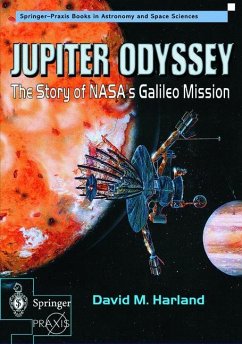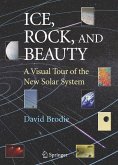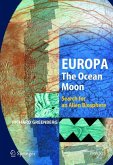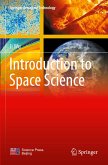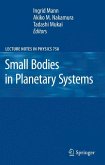Focusing on the Galileo Mission, the story will relate this remarkable spacecraft's protracted gestation and the ordeal of its long haul out to Jupiter and its ultimate triumph: 5 years exploration within the Jovian system. The story spans a full quarter of a century, drawing on the press conferences, technical papers and essays of engineers and scientists involved in the mission which provide a real sense of participation as the discoveries poured in - it will bring the mission of the Galileo spacecraft to life and provide a more engaging account than would simply be achieved by recounting scientific results. The book will conclude with a snapshot "look ahead" into the Cassini flyby of Jupiter in December 2000 shortly after publication - the book released to coincide with this media event.

Vulkanische Landschaften, deren Erscheinungsbild sich schon innerhalb von Monaten beträchtlich wandeln kann, prägen die Oberfläche des Jupitermondes Io. Die für die Erde typischen Vulkankegel sind auf dem Trabanten jedoch selten, wie dieses aus Fotos der Raumsonde Galileo zusammengestellte Bildmosaik zeigt. In der wiedergegebenen Region scheinen nur Apis Tholus und Inachus Tholus (links der Bildmitte) den typischen irdischen Vulkanen verwandt zu sein. Als Ende der siebziger Jahre die beiden Voyager-Sonden an Io vorbeiflogen, waren die Wissenschaftler überrascht, daß auf dem Mond überhaupt keine Einschlagkrater zu sehen waren. Die Erklärung dafür fanden sie rasch. Im März 1979 entdeckten sie auf einem Foto von Voyager 1 den Ausbruch eines Vulkans, der nach dem hawaiianischen Vulkangott Pele benannt wurde. Offenkundig ist der Mond auch heute noch so aktiv, daß große Mengen an Lava seine Oberfläche ständig verändern und Einschlagkrater und andere Strukturen verschwinden lassen. In den vergangenen Jahren sind der Planet Jupiter und seine großen Monde - Io, Europa, Ganymed und Kallisto - mit der Raumsonde Galileo im Detail untersucht worden. In dem reich bebilderten englischsprachigen Buch "Jupiter Odyssey" hat David M. Harland die Mission dargestellt und vor allem die in ihrem Verlauf gewonnenen wissenschaftlichen Ergebnisse umfassend zusammengetragen. Das Material belegt eindrucksvoll, daß Galileo aus Sicht der Forschung zu den erfolgreichsten Unternehmungen der Planetenforschung gehört. (Das Buch "Jupiter Odyssey - The Story of Nasa's Galileo Mission" von David H. Harland ist bei Springer, London/Berlin/Heidelberg 2000, erschienen und kostet 64 Mark.)
Alle Rechte vorbehalten. © F.A.Z. GmbH, Frankfurt am Main
"It is all here, in studious detail... An excellent account of the most amazing little robot ever built."
-Michael Hanlon, Sunday Express
-Michael Hanlon, Sunday Express

